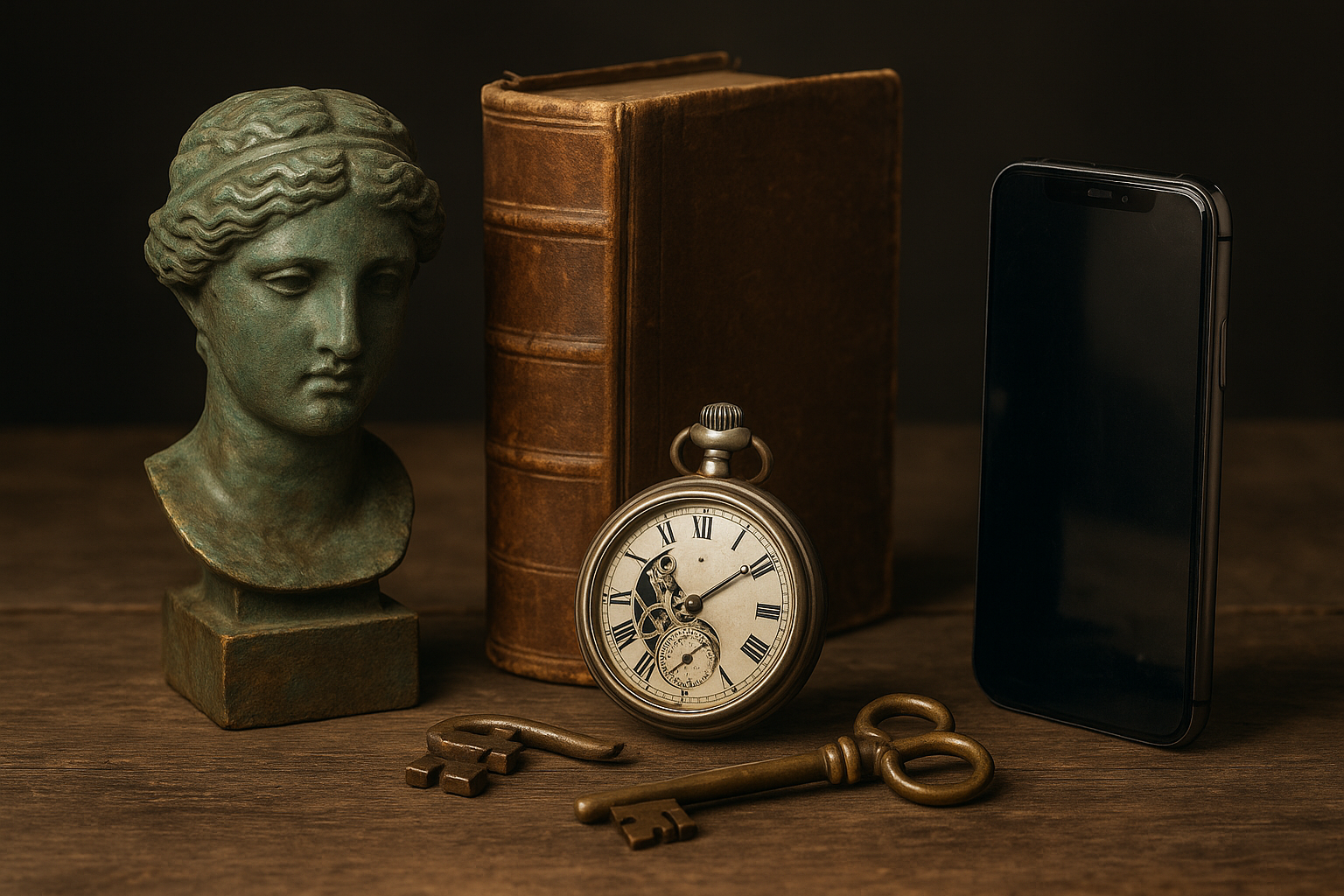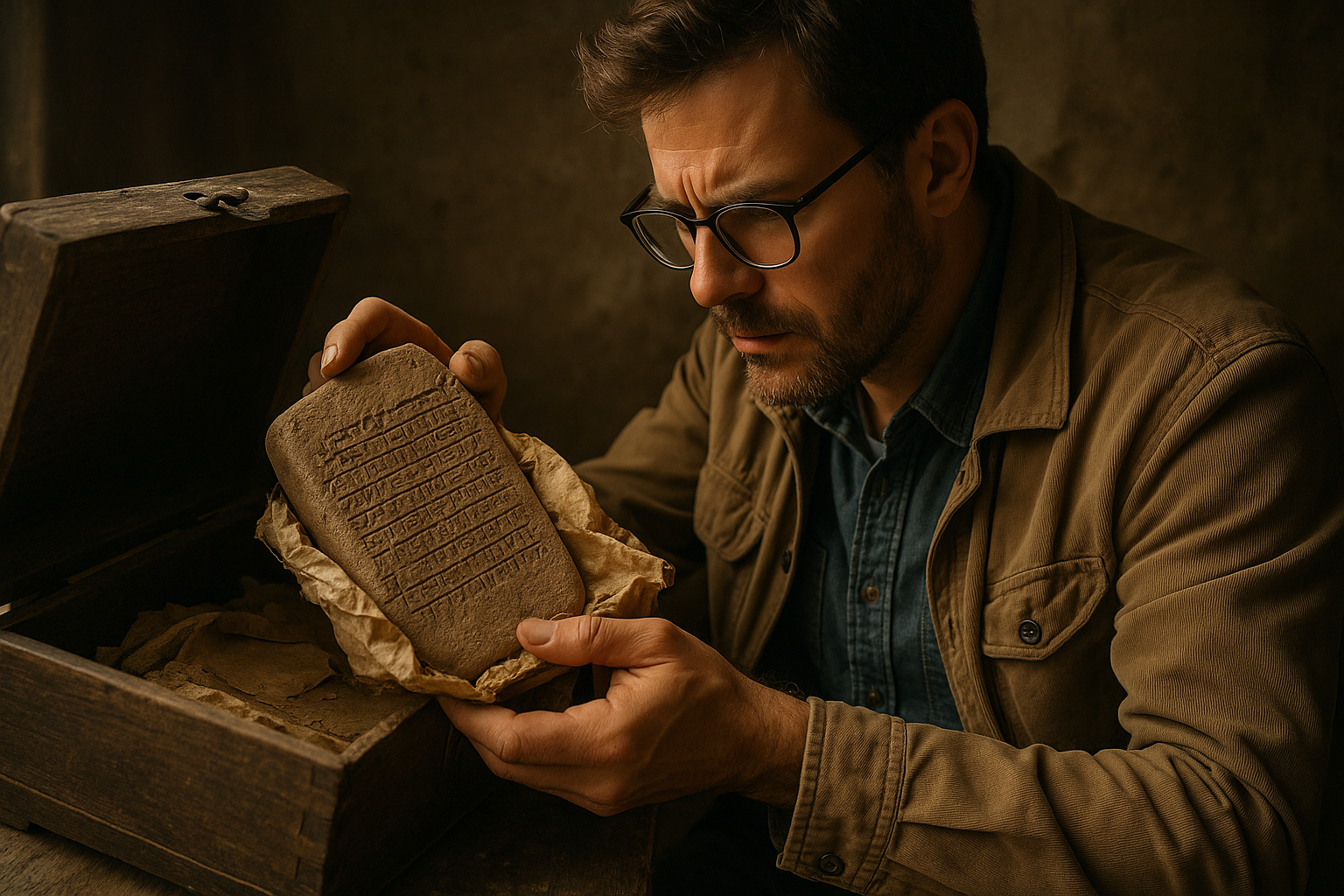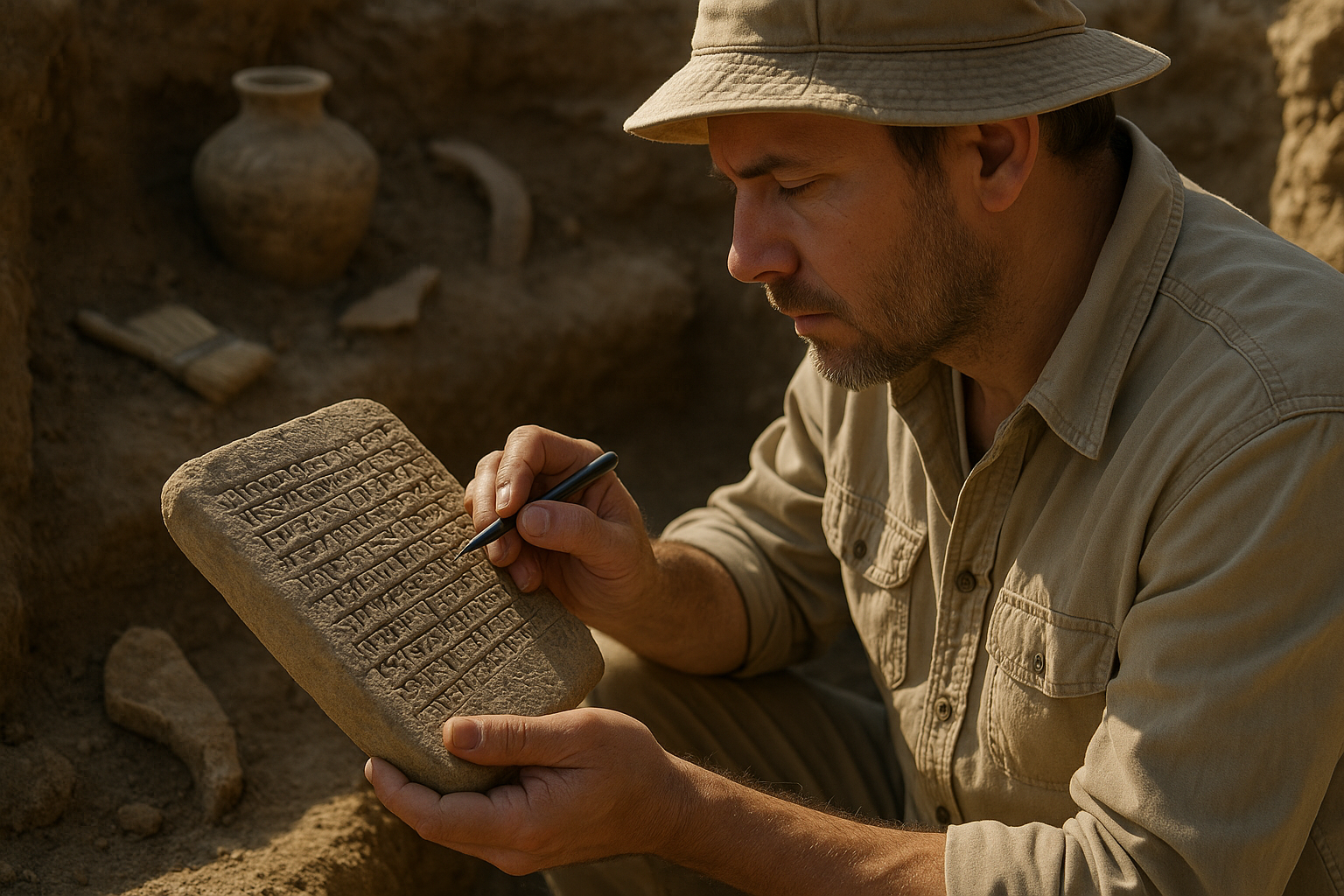Throughout history, humanity has sought ways to protect what is most precious through the mystical art of guardian spells and protective inscriptions, weaving magic into the fabric of reality.
🛡️ The Ancient Origins of Protective Inscriptions
The practice of inscribing protective symbols and spells onto sacred objects dates back to the earliest civilizations. From ancient Mesopotamia to the pyramids of Egypt, our ancestors understood that certain marks, words, and symbols carried inherent power capable of warding off evil, preserving sanctity, and maintaining the integrity of treasured possessions.
Archaeological discoveries have revealed countless examples of these protective measures. Egyptian amulets bore hieroglyphic spells from the Book of the Dead, Sumerian tablets displayed cuneiform incantations, and Viking runes were carefully carved into weapons and jewelry. These weren’t mere decorations—they were believed to be active shields against malevolent forces, physical damage, and spiritual corruption.
The commonality across cultures suggests a universal human impulse to safeguard the sacred through written and symbolic means. Whether protecting temple treasures, family heirlooms, or religious artifacts, guardian spells served as an invisible barrier between the mundane world and the precious objects they surrounded.
Understanding the Mechanics of Guardian Spells
Guardian spells operate on the principle that intention, combined with specific symbolic language, creates a protective energetic field around an object. This concept transcends simple superstition and touches upon deeper metaphysical theories about consciousness, energy, and the power of focused will.
The effectiveness of a guardian spell traditionally depends on several key factors. First, the inscription must be created with clear intention and proper ritual preparation. Second, the symbols or words chosen must align with established magical traditions that have accumulated power through repeated use over generations. Third, the material upon which the inscription is made matters—certain metals, stones, and materials are considered more receptive to magical energies.
The Role of Sacred Geometry and Symbolism
Many protective inscriptions incorporate sacred geometric patterns that are believed to harmonize with universal energy flows. The pentagram, hexagram, and various mandala designs appear across different cultures as protective symbols. These geometric forms aren’t arbitrary—they represent mathematical relationships found throughout nature, from the spiral of galaxies to the structure of DNA.
The positioning of these symbols on an object also carries significance. Placement at cardinal points, centers of mass, or areas of vulnerability can maximize protective coverage. Some traditions specify that inscriptions must circle an object completely to create an unbroken barrier, while others focus protection at specific entry points where negative energies might penetrate.
📜 Types of Protective Inscriptions Across Cultures
Different magical traditions have developed their own distinctive approaches to creating guardian spells and protective inscriptions. Understanding these variations provides insight into the rich tapestry of human spiritual practice.
Hebrew Magical Traditions
Jewish mystical traditions, particularly Kabbalah, have contributed extensively to the canon of protective inscriptions. The Mezuzah, affixed to doorposts, contains parchment inscribed with specific Torah verses. Amulets bearing names of angels, such as Michael, Gabriel, and Raphael, are inscribed on jewelry and carried for protection. The Shem HaMephorash—the 72-fold name of God—appears in various protective configurations.
One particularly powerful protective formula involves inscribing the acronym “KRA SATAN” (meaning “tear apart Satan”) in Hebrew letters. Another common practice involves writing specific Psalms, particularly Psalm 91, known as the “Soldier’s Prayer,” onto parchment that is then rolled and placed inside amulets or incorporated into sacred objects.
Islamic Protective Calligraphy
Islamic tradition has elevated protective inscription to a sublime art form through calligraphy. Verses from the Quran, particularly Ayat al-Kursi (the Throne Verse), are inscribed on objects, buildings, and jewelry for protection. The beautiful flowing scripts themselves are considered to channel divine energy through their aesthetic perfection.
The 99 Names of Allah serve as powerful protective invocations when inscribed properly. Talismans featuring these names, along with magical squares containing numbers and letters, have been used throughout Islamic history to safeguard both individuals and precious objects. The combination of mathematical precision and spiritual content creates what practitioners believe to be an unbreakable protective matrix.
Eastern Mystical Traditions
Hindu and Buddhist traditions employ mantras and sacred syllables as protective inscriptions. The syllable “Om” or “Aum” represents the primordial sound of creation and is inscribed on countless sacred objects. Specific mantras dedicated to protective deities like Durga, Kali, or Vajrapani are written in Sanskrit or Tibetan scripts on religious artifacts, stupas, and prayer wheels.
Chinese Taoist traditions use fu talismans—strips of paper or fabric bearing complex calligraphic spells in red cinnabar ink. These inscriptions combine characters, symbols, and stylized representations of deities or celestial officials. When properly activated through ritual, these fu are believed to command spiritual forces to guard specific objects or spaces.
The Process of Creating Effective Guardian Inscriptions
Creating a protective inscription is not simply a matter of copying symbols onto an object. Traditional practitioners follow specific protocols designed to maximize the spell’s effectiveness and ensure proper spiritual alignment.
Preparation and Purification
Before beginning any protective inscription work, both the practitioner and the object must undergo purification. This might involve ritual bathing, fasting, meditation, or prayer depending on the tradition. The workspace is typically cleansed with smoke from sacred herbs like sage, frankincense, or sandalwood. Some traditions require that the work be done during specific lunar phases or planetary hours for optimal energetic conditions.
The materials used for inscription must also be prepared. Ink might be specially formulated with ingredients like crushed gemstones, essential oils, or ritually charged water. Tools for engraving or writing are consecrated through blessing rituals. This preparation phase establishes the spiritual foundation upon which the guardian spell will be built.
The Act of Inscription
The actual process of creating the inscription requires focused concentration and often involves chanting, visualization, or prayer. Each stroke of the pen or chisel is made with intention, channeling protective energy into the emerging symbols. Mistakes during this process can compromise the spell’s effectiveness, so many traditions recommend that only experienced practitioners create important protective inscriptions.
In some traditions, the inscription is performed in a single unbroken session to maintain energetic continuity. Others specify that certain symbols must be created over multiple days, allowing each layer of protection to set before adding the next. The completion of the inscription is often marked by a final blessing or activation ritual.
⚡ Materials and Mediums for Protective Inscriptions
The choice of material for creating guardian spells significantly influences their character and potency. Different substances resonate with different types of protective energies and are suited for various purposes.
- Precious Metals: Gold represents solar energy and divine protection, silver channels lunar forces and psychic defense, copper conducts energy and amplifies intentions, while iron has traditional associations with warding off faeries and malicious spirits.
- Stones and Crystals: Different stones offer varying protective qualities—obsidian shields against negativity, turquoise guards travelers, jade provides general protection, and black tourmaline grounds and deflects harmful energies.
- Natural Materials: Wood, bone, leather, and parchment each carry specific energetic signatures. Wood connects protective spells to living nature, bone taps ancestral power, leather provides flexible durability, and parchment offers a traditional medium for complex written spells.
- Sacred Inks and Paints: Dragon’s blood ink, saffron-based paints, and mineral pigments like cinnabar or lapis lazuli each add their own protective properties to inscriptions while providing the physical medium for symbol creation.
Activating and Maintaining Guardian Spells
An inscription alone, even one perfectly executed, requires activation to become a functioning guardian spell. Activation rituals vary widely across traditions but share common elements of intention-setting, energy channeling, and formal dedication of the spell to its protective purpose.
Common activation methods include exposing the inscribed object to moonlight or sunlight for specific durations, passing it through incense smoke while reciting invocations, anointing it with consecrated oils, or placing it on an altar surrounded by crystals and candles during a focused ritual. Some traditions require that the object be charged at sacred sites or in the presence of religious authorities.
Ongoing Maintenance and Renewal
Guardian spells are not typically considered permanent and self-sustaining. Like any energetic structure, they require periodic maintenance to remain effective. This might involve regular cleansing rituals, recharging through exposure to appropriate energies, or renewal ceremonies performed at specific intervals.
Signs that a protective inscription needs renewal include physical wear of the symbols, recurring negative incidents affecting the protected object, or intuitive sensing that the energetic barrier has weakened. Some practitioners recommend annual renewal regardless of apparent condition, often timed to significant dates like solstices or personal anniversaries.
🔮 Modern Applications of Ancient Protective Practices
While guardian spells and protective inscriptions originate in ancient traditions, they continue to find relevant applications in contemporary spiritual practice. Modern practitioners adapt these time-honored techniques to address current needs while maintaining respect for traditional foundations.
Contemporary witches and magical practitioners often create protective inscriptions for digital devices, vehicles, and other modern possessions that serve as our current “sacred objects.” The principles remain the same even if the objects differ from ancient artifacts. A protective sigil on a laptop serves the same function as a spell carved into a ancient treasure chest—both shield valuable possessions from harm.
Digital Adaptations and New Approaches
Some modern practitioners explore creating digital guardian spells—protective symbols set as screensavers or hidden in file directories. While purists debate whether digital inscriptions can carry the same power as physical ones, proponents argue that intention and belief remain the crucial factors, and that energy can flow through any medium, including electronic ones.
The creation of custom sigils—personalized magical symbols designed for specific protective purposes—has experienced a renaissance in contemporary practice. By combining elements from various traditions and adding personal symbolism, practitioners craft unique guardian inscriptions tailored precisely to their needs and resonating with their individual energy signatures.
Ethical Considerations and Responsible Practice
Working with guardian spells and protective magic carries ethical responsibilities that thoughtful practitioners must consider. The most fundamental principle is that protective magic should defend rather than attack—a guardian spell creates barriers against harm without directing harmful energy toward others.
Cultural appropriation presents significant concerns in this field. Many protective inscriptions come from living spiritual traditions with specific protocols about who may create and use them. Respectful practice requires understanding these contexts and, when appropriate, seeking guidance from tradition-holders rather than simply copying symbols without comprehension of their deeper meanings and cultural significance.
Practitioners should also consider whether magical protection is the appropriate response to a situation. Sometimes practical mundane solutions—better locks, insurance, security systems—provide more effective protection than spells. Guardian inscriptions work best as complementary measures alongside common-sense precautions rather than replacements for them.
🌟 The Psychology Behind Protective Symbols
Beyond metaphysical explanations, psychological factors contribute significantly to the effectiveness of guardian spells. The act of creating a protective inscription engages the conscious mind in safeguarding what matters, while the symbolic nature of the work communicates protective intentions to the subconscious.
Ritual and symbolism create what psychologists call “psychological anchoring”—the inscription becomes a physical reminder of your commitment to protecting the object, which influences behavior in subtle ways. You handle inscribed objects more carefully, remain more vigilant about their security, and maintain greater awareness of potential threats. These behavioral changes provide real protective benefits regardless of any supernatural mechanisms.
The placebo effect also plays a role that shouldn’t be dismissed as mere illusion. If believing an object is protected reduces anxiety and stress related to its safety, that psychological benefit has real value for wellbeing. The confidence inspired by protective inscriptions can be self-fulfilling—when we feel secure, we often act in ways that increase actual security.
Building Your Personal Practice of Protective Inscription
For those interested in incorporating guardian spells into their spiritual practice, beginning with simple, personally meaningful approaches often proves most effective. Start by identifying what you most wish to protect—perhaps a family heirloom, a ritual tool, or a personal journal containing private thoughts.
Research symbols and traditions that resonate with your cultural background or spiritual path. Learning about your own ancestral protective practices creates authentic connections to the work. Study the meanings behind various symbols rather than simply copying them, allowing understanding to inform your practice.
Begin with simple inscriptions using materials readily available to you. A protective word written on paper and placed inside a special box can be as effective as elaborate engravings, especially when created with genuine intention and focus. As your practice develops, you can explore more complex techniques and materials.

The Enduring Power of Protective Symbols in Human Culture
Guardian spells and protective inscriptions represent humanity’s enduring desire to shield what we hold sacred from the unpredictable forces of existence. Across millennia and cultures, the impulse to mark, inscribe, and symbolically defend our treasured possessions connects us to countless generations of ancestors who sought the same security.
Whether understood as metaphysical reality, psychological tool, cultural practice, or artistic expression, protective inscriptions continue to serve meaningful functions in human life. They transform ordinary objects into vessels of intention, create mindfulness around what we value, and connect us to traditions far older than ourselves.
The symbols we inscribe today join an unbroken chain of protective magic stretching back to humanity’s earliest expressions of spiritual practice. In marking our sacred objects with guardian spells, we participate in one of our species’ oldest and most universal activities—the eternal work of protecting what matters most through the mysterious power of symbols, intention, and belief. ✨
Toni Santos is a temporal researcher and symbolic archaeologist specializing in the study of forgotten burial systems, sacred archival practices, and the visual languages embedded in ancient temporal lore. Through an interdisciplinary and artifact-focused lens, Toni investigates how humanity has encoded knowledge, memory, and mystery into the temporal world — across cultures, rituals, and vanished civilizations. His work is grounded in a fascination with time capsules not only as vessels, but as carriers of hidden meaning. From extinct burial ritual practices to mythical codices and secret temporal seals, Toni uncovers the visual and symbolic tools through which cultures preserved their relationship with the temporal unknown. With a background in design semiotics and temporal artifact history, Toni blends visual analysis with archival research to reveal how time capsules were used to shape identity, transmit memory, and encode sacred knowledge. As the creative mind behind eltonxy, Toni curates illustrated chronologies, speculative temporal studies, and symbolic interpretations that revive the deep cultural ties between artifacts, ritual markings, and forgotten messages. His work is a tribute to: The lost temporal wisdom of Forgotten Time Capsule Burial Rituals The guarded archives of Sacred Codices and Forgotten Temporal Archives The mythopoetic presence of Temporal Symbols and Ritual Markings The layered visual language of Vanished Artifacts and Temporal Messages Whether you're a temporal historian, symbolic researcher, or curious gatherer of forgotten chronological wisdom, Toni invites you to explore the hidden roots of time capsule knowledge — one seal, one glyph, one message at a time.




